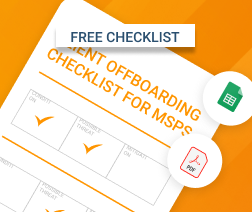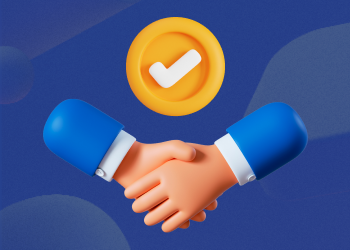Getting fired by a client happens, and when it does, it can be emotionally draining, especially when money is tight. Although you may feel tempted to resent or retaliate against the new managed service provider (MSP), staying professional and cooperative is a far better choice.
By working collaboratively with the new MSP during the transition period, you protect your reputation, keep the door open for new opportunities, and steer clear of any legal or ethical issues. Plus, it’s simply the right thing to do.

Use these tips to help ensure a smooth, professional transition for everyone involved.
Further reading MSP Offboarding Basics
Schedule a Call With the New MSP and Client
Manage expectations and align priorities early on by scheduling a call with the new MSP and the client. This proactive step not only demonstrates your commitment to transparent MSP communication but also shows your willingness to collaborate. The call gives everyone involved an opportunity to discuss the transition openly and address any potential issues before they arise.
Find Out What the New MSP Brings to the Table
Learn about the new MSP’s software, technologies, and services, and understand how these align with those currently used by the client. This should be a collaborative effort between you and the new MSP. While it’s ultimately up to the new MSP to identify any gaps, being open and forthcoming on your end is the best approach. The last thing you want to do is drag your feet and create challenges for both the client and the MSP — that’s how reputations start to suffer.
Make a Transition Plan
Consider the time available between now and the date when the new MSP will take over and assess what they’ll need in order to prepare effectively. Work closely with the new MSP to develop a transition plan that minimizes the risk of service disruptions for the client. Maintain clear communication and collaboration throughout the process and address any issues that arise promptly.
Further reading Strategies for a Smooth Transition and Customer Retention for MSPs
Details About the Client’s IT Environment
Although you have valuable insights into the client’s environment, be sure to obtain the client’s written consent before sharing any information. With consent, provide the new MSP with comprehensive details about the client’s IT environment, including hardware, software, and tools in use. Explain how client-specific systems operate and offer detailed instructions when possible. Stay accessible to address any questions or concerns from the new service provider.
Share Client Data With the New MSP
Provide the new MSP's authorized personnel with access to client data, and do not hide or choose not to disclose certain information. Remember, you are agreeing to let this MSP take over a client's account. They need relevant information to continue to support a client. The data you provide will help them do just that.
Keep the Lines of Communication Open
If the new MSP or the client contacts you in the future with questions, respond professionally. Give concerns and questions from these parties the attention they deserve. Respond as best as you can and point them in the right direction for further support.
A professional approach to a transition reflects well on you and your team. Based on a successful transition to a new MSP, past clients could come back to your business or refer new companies to you down the line.




